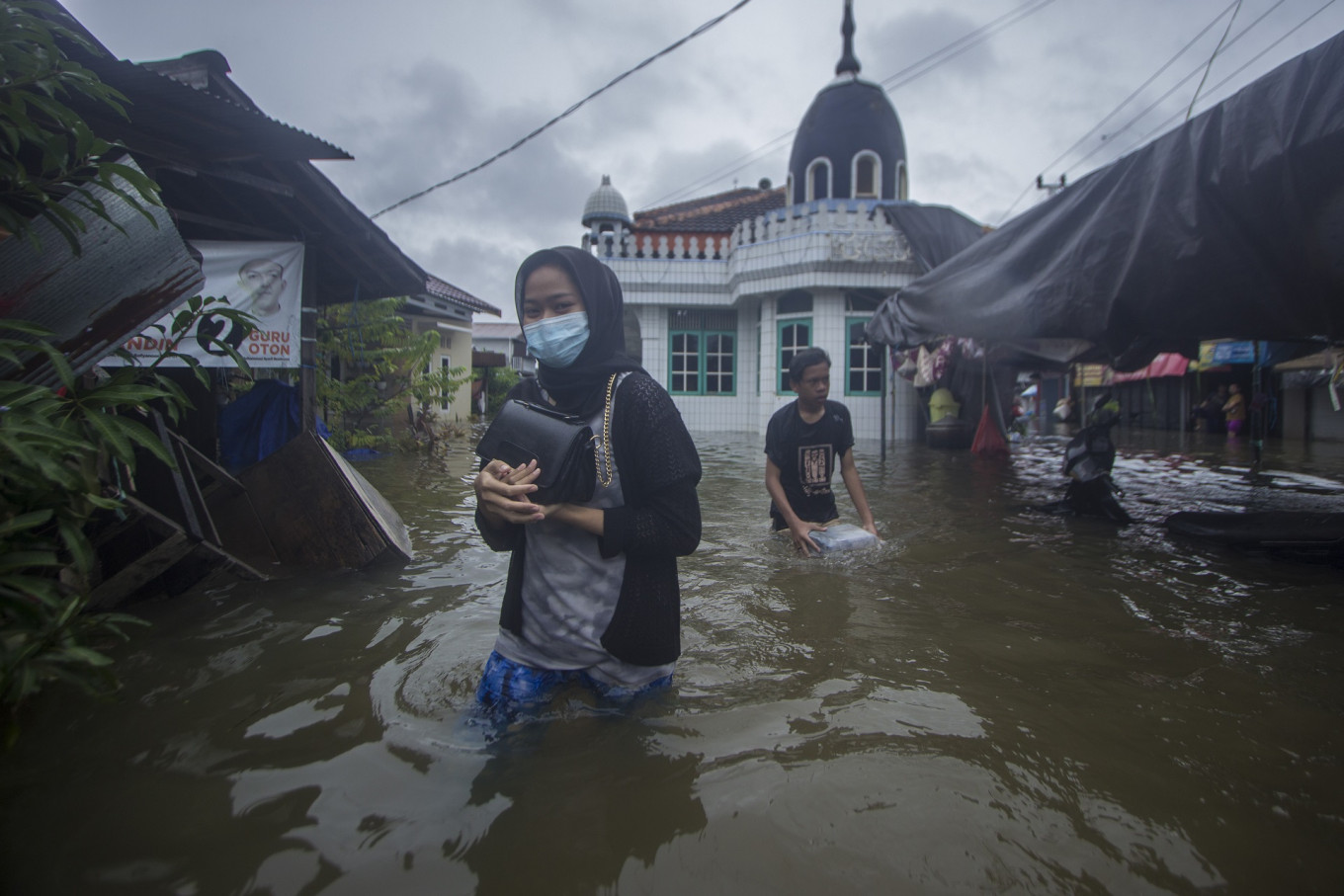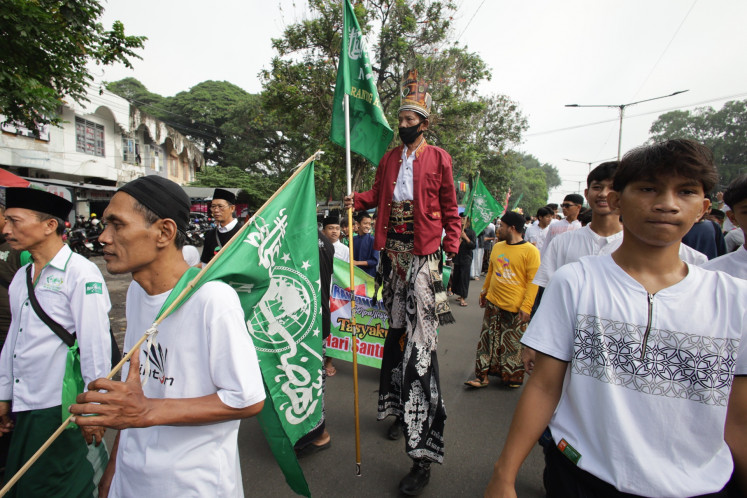Popular Reads
Top Results
Can't find what you're looking for?
View all search resultsPopular Reads
Top Results
Can't find what you're looking for?
View all search resultsSouth Kalimantan declares state of emergency after flooding
Heavy rainfall has drenched the province since Jan. 3, causing rivers in the regencies of Tanah Laut and Balangan to overflow.
Change text size
Gift Premium Articles
to Anyone
T
he South Kalimantan administration has declared a state of emergency as flooding in multiple regencies has forced more than 20,000 people to flee their homes.
Heavy rainfall has drenched the province since Jan. 3, causing rivers in the regencies of Tanah Laut and Balangan to overflow. These areas were the most affected by flooding.
A river in Palaihari, Tanah Laut, rose 2 meters above typical levels, submerging at least 6,346 houses in the two regencies.
According to the National Disaster Mitigation Agency (BNPB), at least 21,990 residents of Tanah Laut have been displaced because of the floods. They are being accommodated at five shelters across the regency.
The floodwaters cut off the road between Palaihari district and the provincial capital of Banjarmasin.
Read also: 2020 weather disasters boosted by climate change: Report
In Balangan, heavy rainfall caused the Balangan and Pitap rivers to swell, causing flooding that reached 1.5 meters in depth. As of Saturday morning, the flood had not receded, the BNPB announced.
At least 3,571 houses were submerged and 11,816 people were displaced in the regency.
Kompas.com reported that dozens of residents were still awaiting evacuation. Many were taking refuge on the roofs of homes.
Governor Sahbirin Noor declared a province-wide state of emergency on Friday. He said in a statement that landslides, hurricanes and tidal floods had also affected the province.
South Kalimantan Disaster Mitigation Agency (BPBD) head Mujiyat said two of the province’s regencies had declared additional states of emergency: Banjar and Tanah Laut regencies.
“The flooding affected at least four regions: Banjar, Tanah Laut and Balangan regencies, as well as Banjarbaru city,” Mujiyat said on Friday, as quoted by kompas.com.
President Joko “Jokowi” Widodo said he had ordered the BNPB, the military and the police to send aid to the affected residents of South Kalimantan.
“I urge residents to remain alert for disasters such as floods and landslides due to an increased risk of extreme weather lately,” Jokowi said in a televised statement on Friday.
The BMKG has warned that the peak of the rainy season was expected to last from January to February in most of the country.
Environmentalists have pointed to rampant environmental degradation in the province as a cause of the major flooding.
Jefri Raharja, a campaigner with the Indonesian Forum for the Environment’s (Walhi) South Kalimantan chapter, said land clearing for oil palm plantations and mining in the province had caused ecological damage that led to increased flooding.
“The trees that are supposed to bind the ground and store rainwater have disappeared,” Jefri said on Thursday, as quoted by kompas.com.
Read also: A perfect storm: Indonesia braces for more disasters amid COVID-19, plane investigation
Indonesia has been hit by at least three major natural disasters in the past two weeks.
A 6.2-magnitude earthquake struck West Sulawesi on early Friday morning, leveling a hospital and severely damaging other buildings. Forty-six casualties had been recorded as of Saturday afternoon, and authorities have warned that people are still trapped beneath the rubble.
On Jan. 9, heavy rainfall and unstable soil caused a series of landslides in Sumedang, West Java. The incidents claimed the lives of at least 25 people, including search and rescue workers and local administration officials who had been working to evacuate survivors of the disaster.










